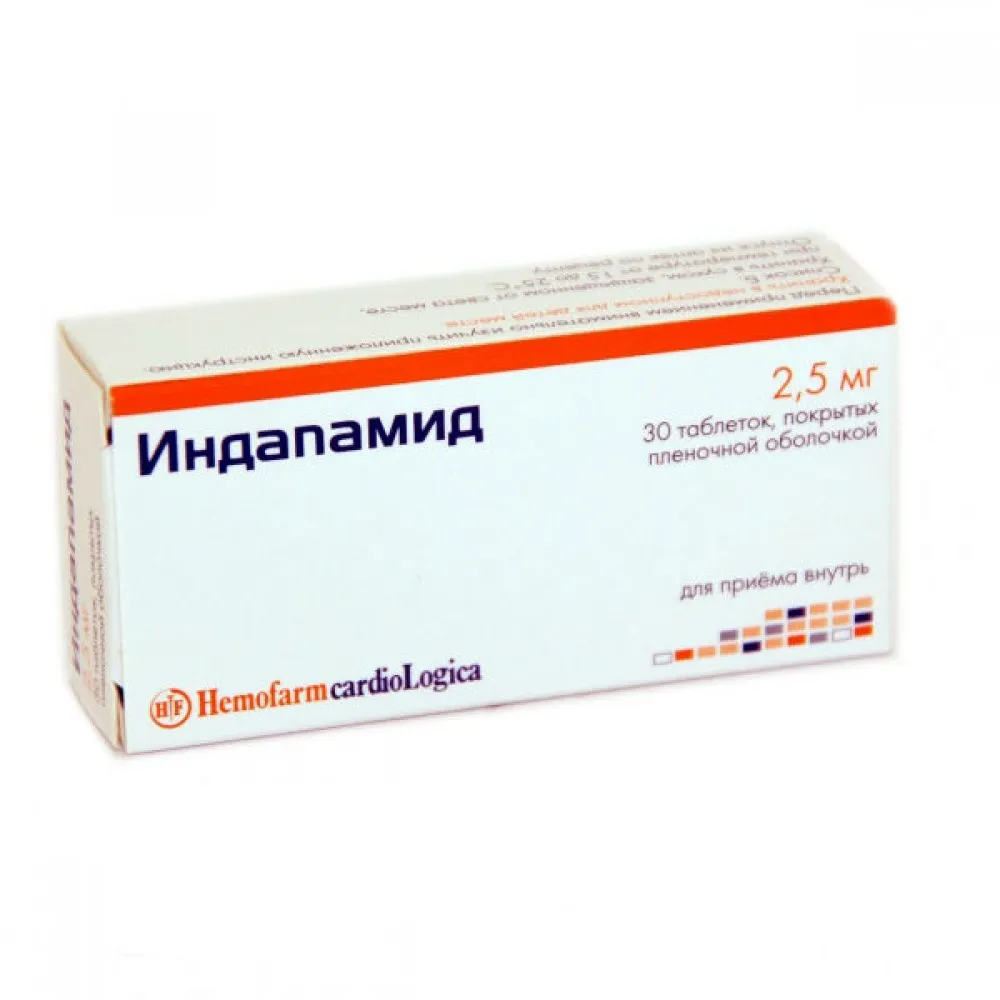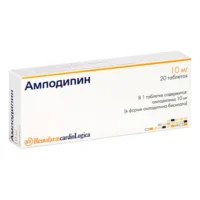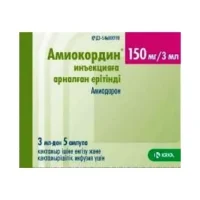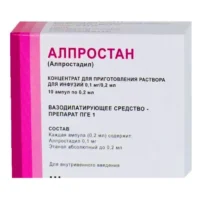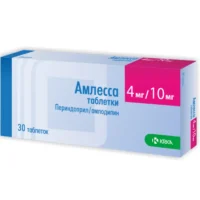Description
Indapamid Coated Tablets 2.5 mg. №30
Ingredients:
Each coated tablet contains 2.5 mg of Indapamide as the active ingredient. Other ingredients include lactose monohydrate, maize starch, colloidal anhydrous silica, magnesium stearate, hypromellose, macrogol 6000, and titanium dioxide (E171).
Mechanism of Action:
Indapamid tablets work by promoting diuresis and vasodilation, leading to a decrease in blood pressure. The drug acts on the distal convoluted tubule of the kidneys to inhibit sodium reabsorption, resulting in increased excretion of sodium and water. This mechanism helps to reduce the volume of circulating blood and lower blood pressure.
Pharmacological Properties:
Indapamide, the active ingredient in Indapamid tablets, is a thiazide-like diuretic with antihypertensive properties. It acts by increasing urine production and reducing fluid retention, thus lowering blood pressure.
Indications for Use:
Indapamid tablets are indicated for the treatment of hypertension (high blood pressure). They help to lower blood pressure by increasing urine production and reducing excess fluid in the body.
Contraindications:
Do not take Indapamid tablets if you are allergic to Indapamide or any other ingredients in the formulation. It is also contraindicated in patients with severe kidney impairment or anuria.
Side Effects:
Common side effects of Indapamid tablets may include dizziness, lightheadedness, electrolyte imbalances (especially potassium), and gastrointestinal disturbances. Consult your healthcare provider if any adverse reactions occur.
Usage Instructions:
The recommended dosage is one tablet daily, preferably in the morning. Swallow the tablet whole with a glass of water. Do not crush or chew the tablet. It is important to follow the instructions provided by your healthcare provider and take the medication at the same time each day.
Benefits Compared to Analogues:
Indapamid has shown comparable efficacy to other antihypertensive agents with a lower risk of adverse effects, as demonstrated in a meta-analysis published in the Journal of Hypertension.
Suitable Patient Groups:
Indapamid tablets can be used in adult patients with hypertension. Dosage adjustments may be necessary for elderly patients or those with renal impairment. Consult a healthcare professional for individualized recommendations.
Storage and Shelf Life:
Store Indapamid tablets in a cool, dry place away from direct sunlight. Keep the medication in the original packaging to protect it from moisture. Check the expiration date on the package and do not use the tablets beyond that date.
Packaging Description:
Each package of Indapamid tablets contains 30 coated tablets, each with 2.5 mg of Indapamide. The packaging is designed to ensure the integrity and stability of the tablets.
Scientific Evidence:
Studies have shown that Indapamide, the active ingredient in Indapamid tablets, is effective in lowering blood pressure and reducing the risk of cardiovascular events. According to a meta-analysis published in the Journal of Hypertension, Indapamide demonstrated comparable efficacy to other antihypertensive agents with a lower risk of adverse effects.
Additional Information:
It is important to monitor electrolyte levels regularly while taking Indapamid tablets, especially potassium levels. This medication may cause dizziness or lightheadedness, so caution is advised when driving or operating machinery. Consult your healthcare provider for more information on potential drug interactions.

